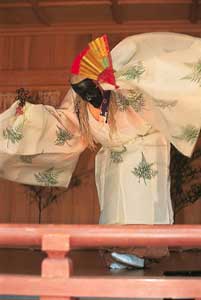
| Classification | Other |
|---|---|
| name | New Year of Motsu-ji Temple |
| alias | Dance of the year of Motsu-ji |
| Designated date | May 17, 1977 |
| Holding group | Dance of Motsuji Year |
| location | Hiraizumicho Hiraizumi Osawa |
| home page |
Iwate's Cultural Information Encyclopedia (Metsuji's New Year) |
Overview
It has been practiced as a courtesy for revising a petition after the usual practice of Zengatsu at the Motsuji Night Festival (January 20), and it is said that it is also known as the Taihokai and Harukanjin.
The long-lived dance has been performed in the temple hall as one of the festival's inner courts, and the danceman prepares in the hall and the old monk who works in the hall appears from the old monk room .
First of all, there are "Congratulations" for wish fullness, longevity and Chiaki, and "Daraku", "Rai Mai" (Tapako), "Old Woman Dance", "Wakame Mai", "Kyoto Mai" etc.
The year is an important thing in the history of performing arts in Japan, in order to know the medieval performing arts from dance to noh, but what has been transmitted in a form that has been kept in order like this "long years of Moshi Temple" There are no examples in the world, and they have extremely high value.
Main performance place
Motsu-ji Temple 20th Night Festival (January), Spring Fujiwara Festival (May), Ayame Festival (June), Zen Festival (September), etc.
